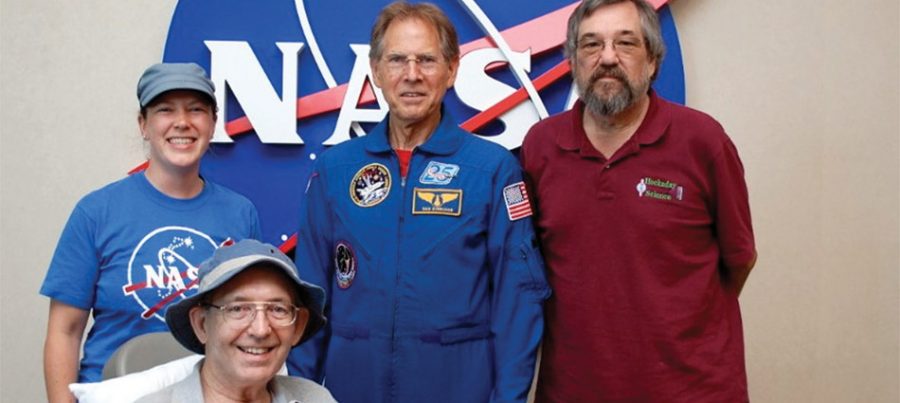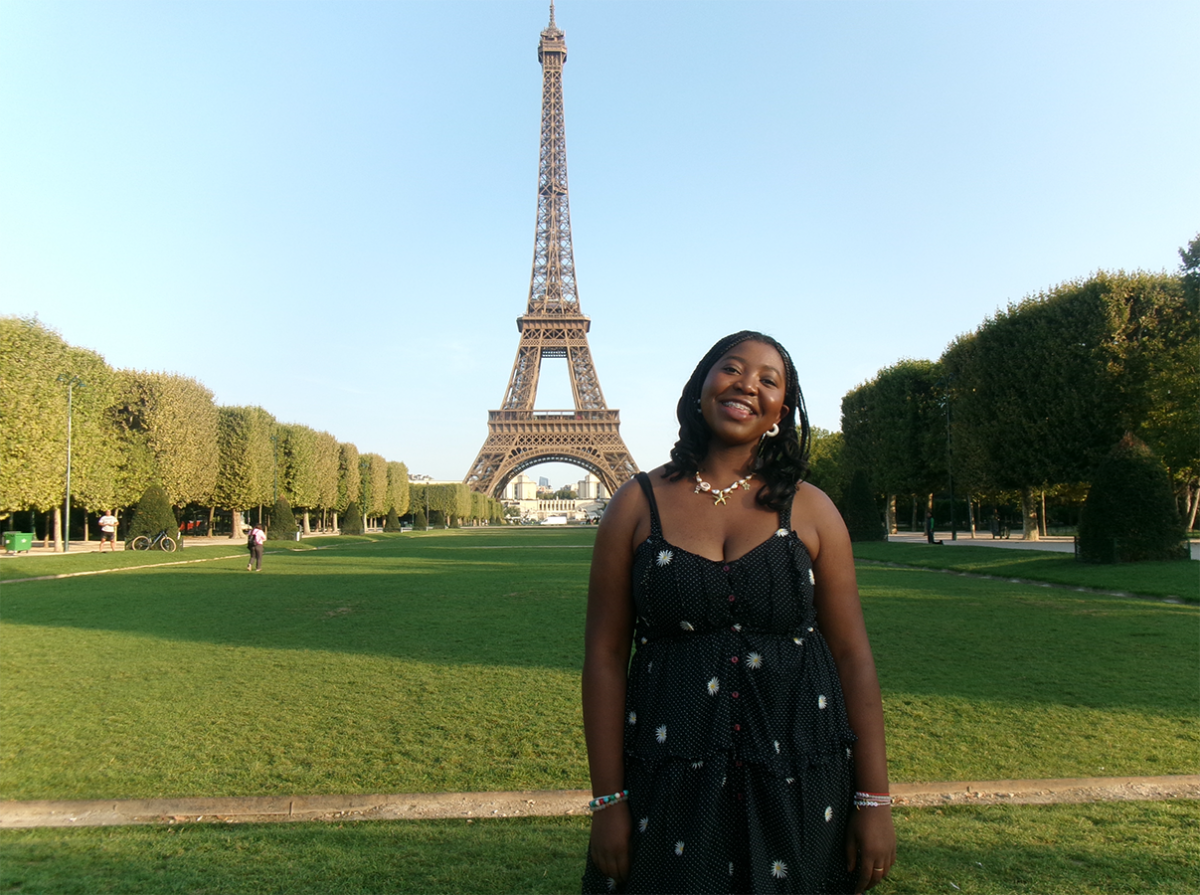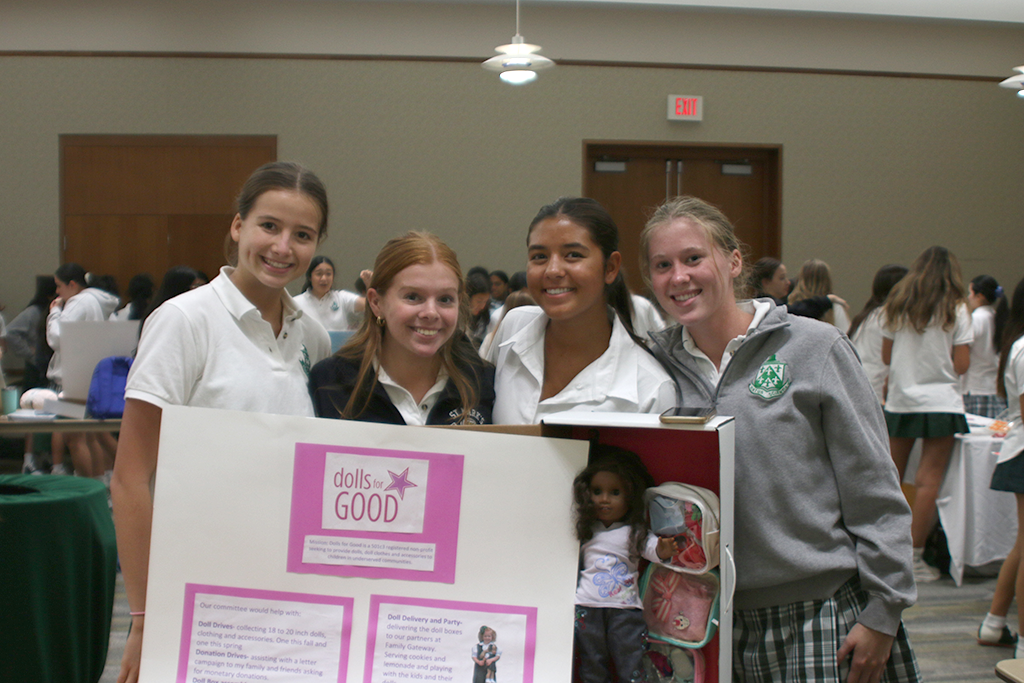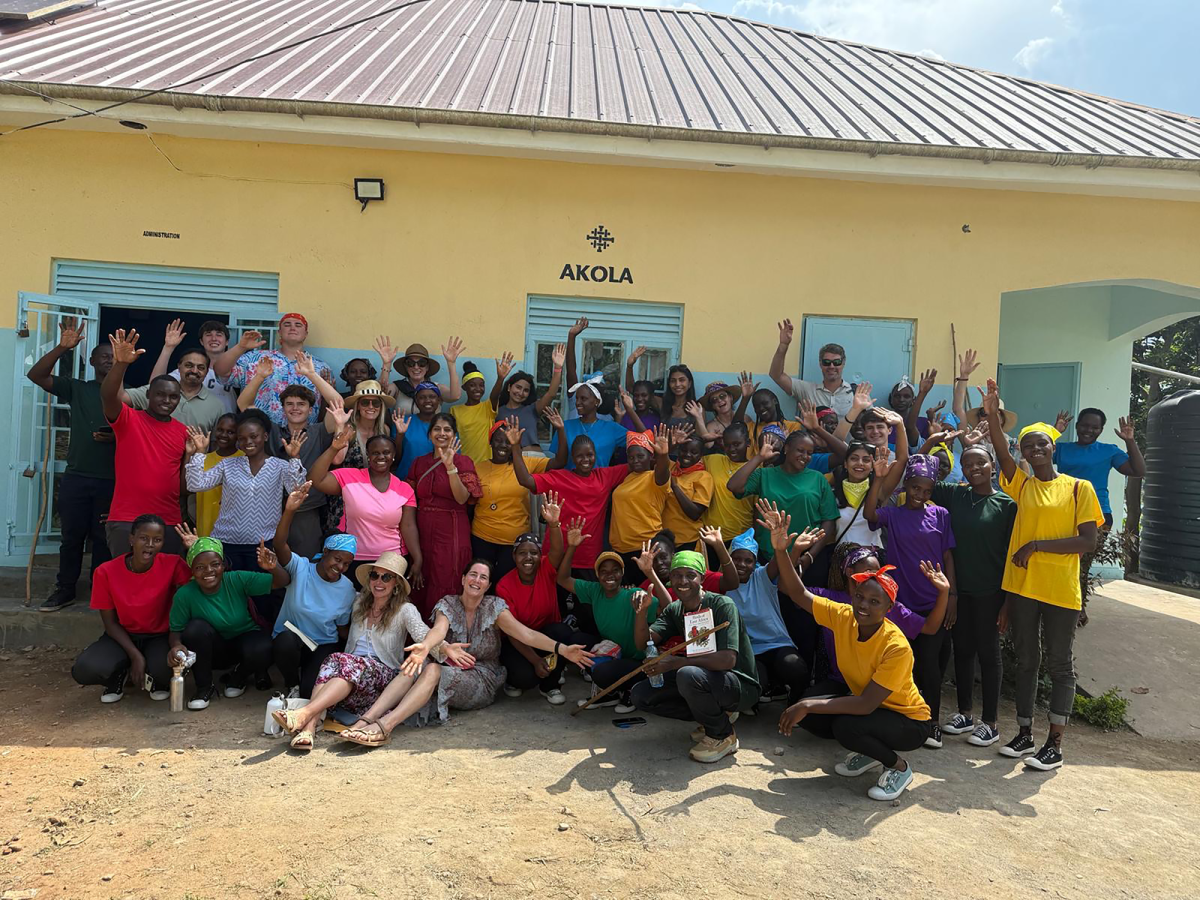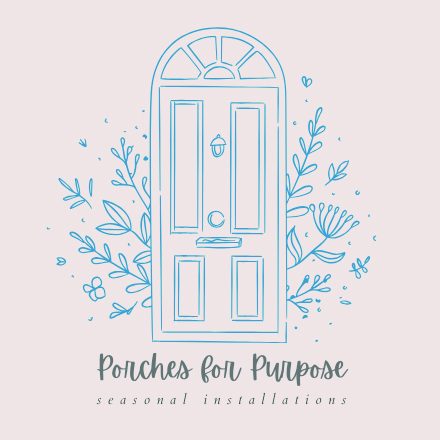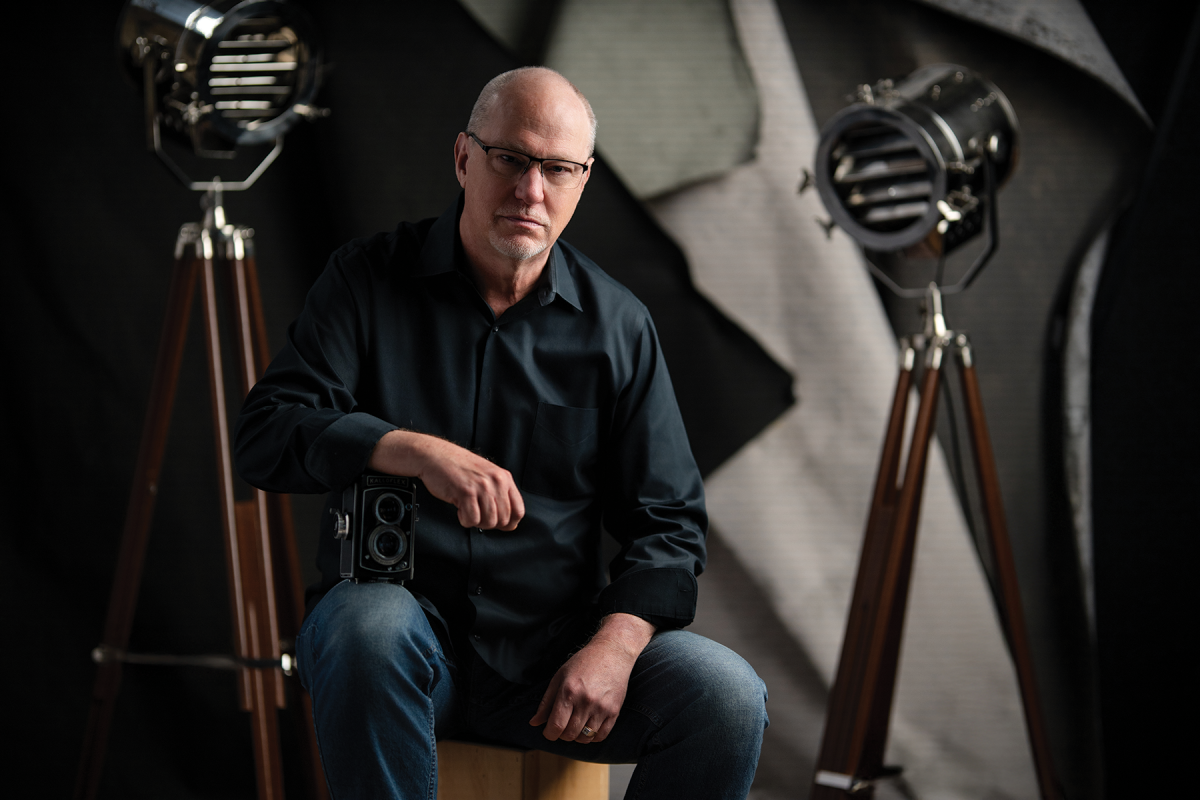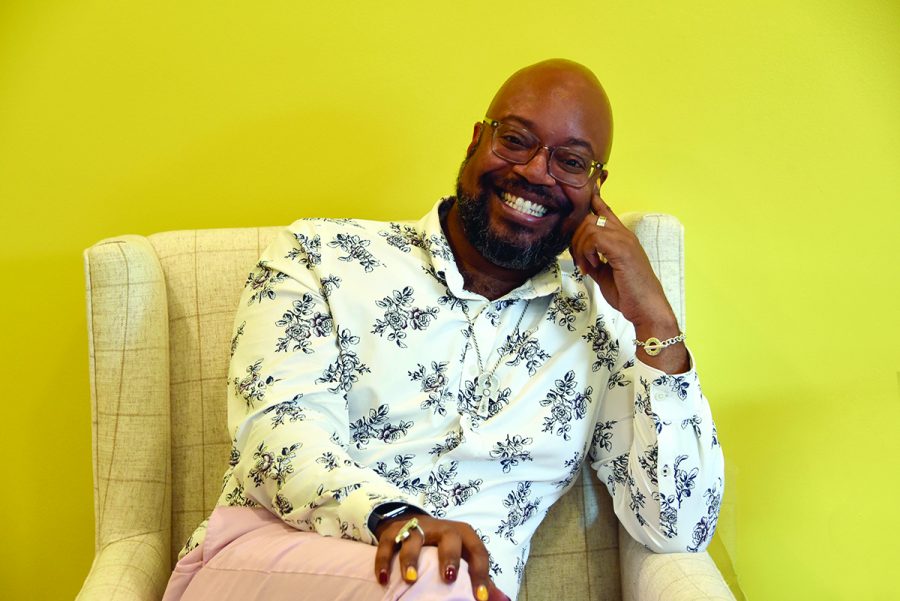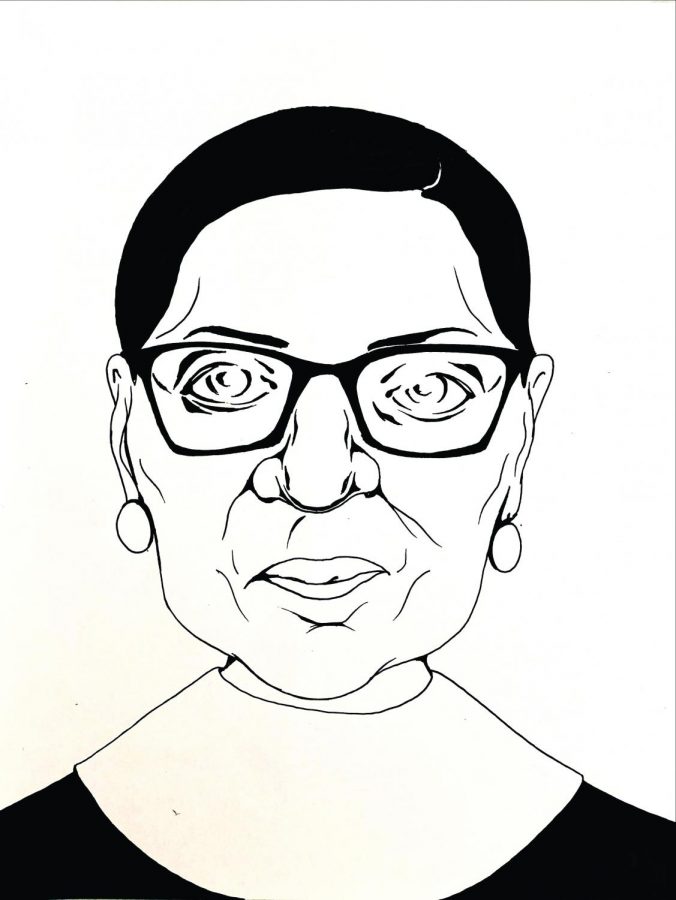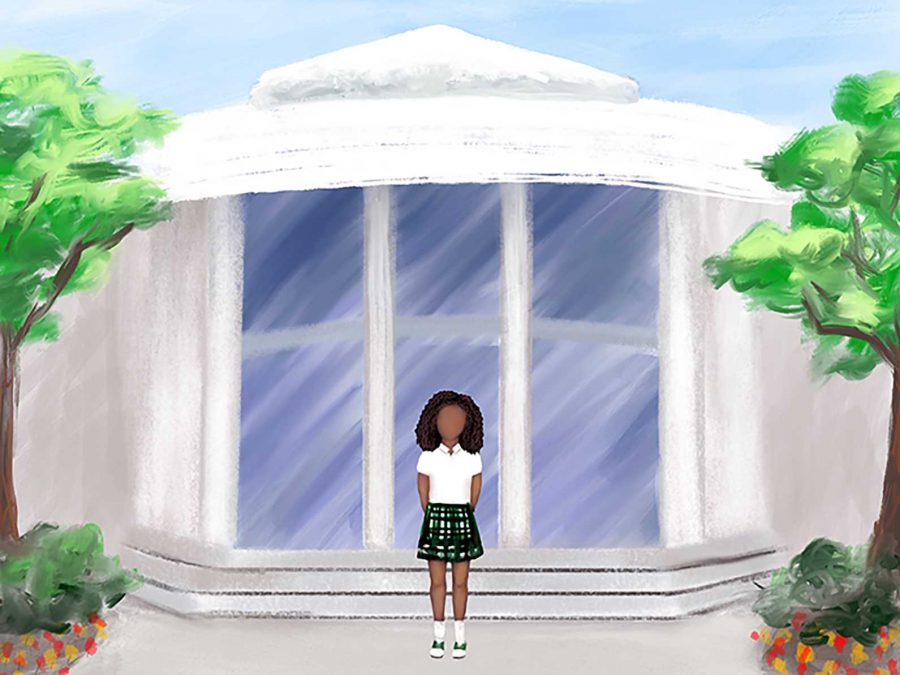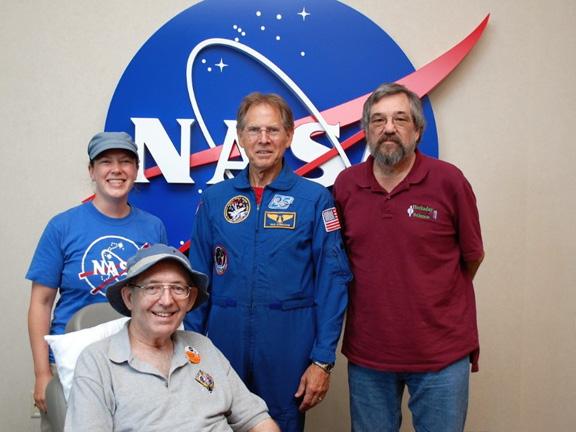
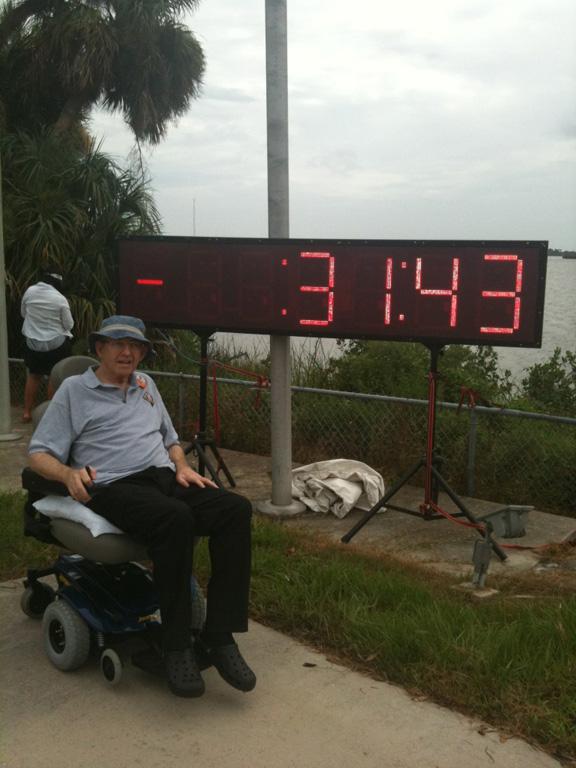
The scene on July 8 was electric. Thousands who camped out over night watched from mere miles away while millions around the world tuned in for the last NASA shuttle launch. The end of a 20-year program, the launch was more than a scientific event for Hockaday physics teacher, Pete Lohstreter. It was a dream come true.
“I had been talking about wanting to see the launch,” said Lohstreter, “but it is one of those things that you don’t know if it will happen or not.”
As a token of their thanks and in light of his diagnosis with ALS, Lohstreter’s senior advisory wanted to give him a gift he would never forget. “We knew that we wanted to do something for Mr. Loh, but couldn’t think of the perfect gift until physics teacher Mr. Taylor came up with the idea of the shuttle launch,” said Tory Tarpley ’11. Without hesitation, the planning began.
In order to acquire the tickets, faculty and staff members at Hockaday entered their names in the lottery for the launch. Finally, Cheryl Larson, a former Hockaday teacher, received the lucky call and acquired tickets for the entire group: Lohstreter and his wife Lea, Taylor and his wife Gay, as well as former Hockaday science teacher Rachel Zabierek and her husband Corbett.
“It was because of the participation of the Hockaday faculty that made getting the tickets possible,” Taylor said.
Everyone pitched in. “Our families all contributed to the financial side of things,” Tarpley said, “and my mom did a lot of the organizing to smooth out the details.”
“After the idea was hatched, it captured everyone’s imagination and we set about making it happen,” said Tarpley’s mom, Gloria.
After all the arrangements were secretly made, Lohstreter’s advisory told him to be at Hockaday early one day. The girls presented him with a bag containing a miniature space shuttle figure. Lohstreter kindly accepted the gift, not recognizing its greater significance.
“No, you don’t understand,” they said. “You are going to the launch.” Lohstreter then pulled out the plane tickets and hotel reservations.
He recalled his initial reaction. “I said ‘aww man,’” beginning to tear up. ‘you girls are just too much.’”
The road to Florida was somewhat rocky. At first, Lohstreter’s doctor would not permit him to board a plane due to some breathing problems he had been experiencing. After beginning a new medication, a mere five days before the trip, Lohstreter received a call asking him how he was doing. “I’m ready to go” he replied, and sure enough, he received the green light.
Once in Florida, the three couples anxiously awaited the launch. Lohstreter and his wife toured the Kennedy Space Museum a few days before launch day. “We looked for alligators but didn’t find any,” Lohstreter joked.
Finally, the big day arrived. Zabierek and Taylor set up camp with the thousands of others awaiting the launch, but Lohstreter and his wife received special treatment. Thanks to Ambassador Phillips, mother of Margaret ‘11, the Lohstreters were given VIP passes to view the NASA launch.
“We were three miles from the shuttle and about 10 feet from the ocean,” Lohstreter said. “The next closest seat would have been on the shuttle.”
“I was awestruck,” Lohstreter said. “Seeing something that big going that fast was just incredible. You could see and feel everything shaking.”
Even miles away from the VIP seating, “there were screams everywhere,” Taylor said. “A lot of ‘wow’s and then there was a collective ‘ohh’ of surprised disappointment as the shuttle disappeared into the low clouds.”
The space program has contributed to the major advancements in technology throughout the past decades. From microwaves to iPhones, our daily lives have been affected in some way from these discoveries. The new program will use the International Space Station as a stepping stone for the many journeys ahead.
Now more than ever, the trickle-down effect from the space shuttle program is directly affecting Lohstreter as he undergoes treatment for ALS. At our interview on Sept. 16, during the last week of his hospital stay for intensive physical therapy, Lohstreter was able to point out different technologies, like the nurse call button system, which resulted from the space program’s research.
Of course, the day to day integration of space technology is no replacement for the real thing, and Lohstreter is grateful to have made it to a launch.
“It was my first time to see the last time,” he said, smiling.
– Nina


